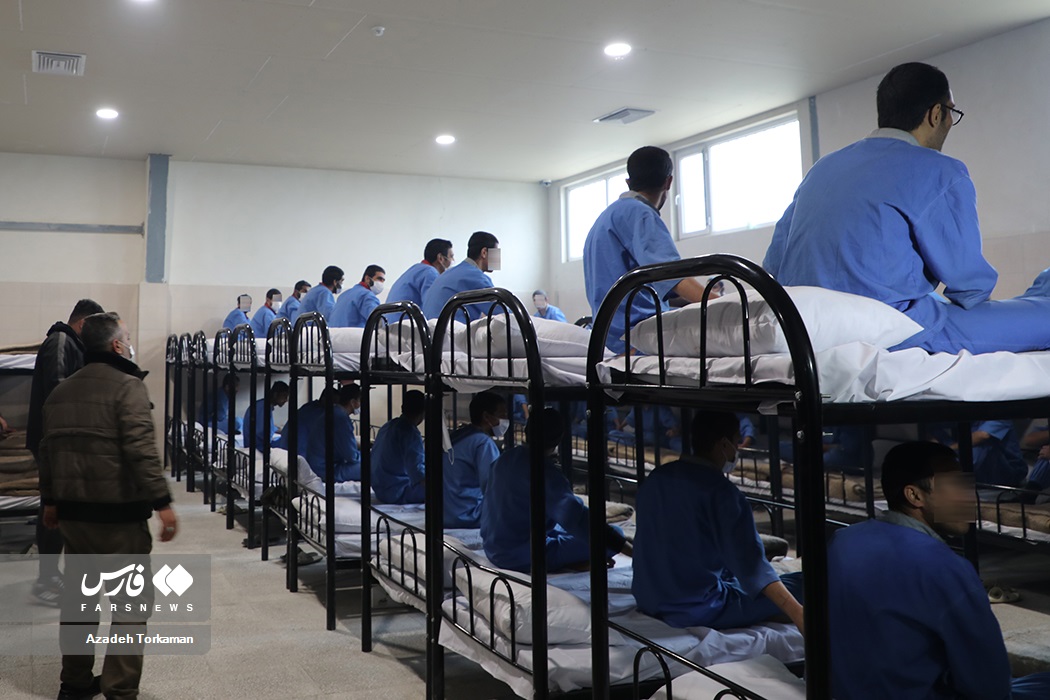
Inauguration of the second phase of the Shahid Ziyadian Treatment Center, Tehran.
“Sometimes it takes up to a year and a half to find the families of these individuals.”
On 25 June Brigadier General Hasan Hassanzadeh, commander of the Islamic Revolutionary Guard Corps (IRGC) for the greater Tehran region, visited the IRGC’s soon-to-be expanded Shahid Ziadian Treatment Center. Hassanzadeh’s visit is significant for two reasons. First, as the officer in charge of Tehran’s security from enemies foreign and domestic, he is on the fast track for promotion to the top levels of Iran’s security apparatus. Second is his choice to focus attention on drug addiction and other threats facing not only broader Iranian society, but also the Iranian military.
The official media outlet of the Iranian Ministry of Defense, Holy Defense News Agency, describes the imminent expansion of the Shahid Ziadian facility from 1,500 beds to 2,600 beds. By comparison, the James J. Peters Veterans Administration Medical Center in New York, among the largest Veterans Administration hospitals in the United States, has 1,663 beds. While the excerpted article does not detail the ailments that the new facility treats, additional reporting suggests the primary goal of the facility is drug rehabilitation. Photos from Fars News Agency depict young, military-age men in close quarters. Hassanzadeh was also accompanied by Brigadier General Eskandar Momeni, Secretary-General of Iran’s Anti-Narcotics Headquarters. Post-revolutionary Iran has long had some of the toughest drug penalties in world. However, in November 2017 Iran significantly loosened penalties for many drug crimes, perhaps signaling a recognition of the science behind addiction as well as the scope of the problem. In 2009, Esmail Ahmadi-Moghaddam, the chief of Iran’s Law Enforcement Forces, said Iran produced 130,000 new addicts annually and acknowledged that more than one million Iranians were now addicted, mostly to opium and heroin. In 2020, Naser Aslani, deputy head of Iran’s Drug Control Headquarters, reported that his agency counted 2.8 million addicts and estimated an additional 1.4 million remained unidentified. The IRGC’s expanded facility in Tehran is a possible reflection of the scope of the problem and perhaps its growing impact on military readiness.
Source:
“Faz-e Jadid Markaz-e Daman-e Shahid Ziadian bezudi Ahdas Mishavad (New Phase of the Shahid Ziadian Treatment Center to be Constructed Soon),”, Holy Defense News Agency (official news agency of the Iranian Ministry of Defense), 25 June 2022. https://defapress.ir/fa/news/530666
General Hassan Hassanzadeh, commander of the Revolutionary Guards for Greater Tehran, said this morning [25 June 2022] at the National Conference for the Celebration of Rescue held at the Martyr Ziadian Treatment Center, “There are 1,500 clients in the Shahid Ziadian Treatment Center affiliated with the Islamic Revolutionary Guards Corps of Greater Tehran. Within the next six months, we will build a new phase of this center for 1,100 people….”
The commander of the Greater Tehran Revolutionary Guards Corps continued, “One of our problems in this center is the time it takes to find the families of the clients, because sometimes it takes up to a year and a half to find the families of these individuals. Another activity of this center is to create vocational training workshops. For this reason, we are now looking to obtain orders for the sewing of military clothing by the clients of this center.”
Image Information:
Image: Inauguration of the second phase of the Shahid Ziyadian Treatment Center, Tehran
Source: Fars News Agency
https://www.farsnews.ir/photo/14001112000780
